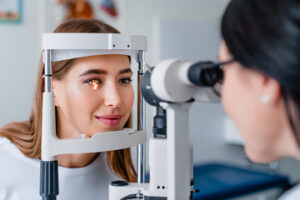Ozempic San Diego is an injection given under the skin (subcutaneous) once a week. It is typically injected into the abdomen, thigh, or arm. Make sure you use a different injection site each time and change the needle after each use.
Doctors can also prescribe it “off-label” — meaning for a purpose not approved by the FDA — as a way to treat obesity. But can it really help?

The dosage of ozempic your doctor prescribes will determine how well the medication works for you. Always follow your doctor’s instructions carefully. Taking too much or too little can have serious side effects.
Ozempic is injected under the skin once a week, in the abdomen, thigh, or back of the upper arm. It is important to rotate the injection site each week to avoid irritation. It is also recommended to inject your medication into a site that is at least 2 inches (4 cm) away from a scar, fatty tissue, or muscle.
If you experience a serious allergic reaction to Ozempic, seek emergency medical attention right away. Symptoms of a severe allergic reaction may include hives, trouble breathing, and swelling of your face, lips, tongue, or throat.
Ozempic decreases blood sugar levels in adults with type 2 diabetes, along with diet and exercise. This helps reduce the risk of serious heart and blood vessel problems in people with diabetes. It does this by blocking a chemical in the body that causes sugar to be made. It also slows the way food moves out of the stomach, so the body can absorb more of the glucose it contains.
Unlike some other diabetes medications, it is safe to take this drug while pregnant or breastfeeding. However, it is not known if it passes into breast milk and could harm a nursing baby. Talk to your doctor before using this medication if you are breastfeeding or plan to start.
Your doctor will test your blood before prescribing Ozempic and periodically during treatment. Your doctor will also want to know if you have any other health conditions, such as kidney or liver disease. The same is true for other medications you are currently taking or have used recently, including prescription and over-the-counter drugs, vitamins, and supplements.
ozempic is similar to a drug called Victoza, which is FDA-approved for use by people with type 2 diabetes and weight issues. Wegovy, another medication in the same class as Ozempic, is approved by the FDA for long-term weight management in conjunction with lifestyle improvements in diet and exercise.
Dosage
If you have Type 2 diabetes, your doctor may prescribe ozempic for the purpose of controlling your blood sugar levels. They’ll typically start you on a lower dosage and gradually increase it over time until you reach the optimal weight loss dose.
You’ll inject Ozempic under the skin (subcutaneously). Your doctor will show you the proper injection site when you first start treatment, which is usually in your abdomen, thigh, or upper arm. Avoid injecting into the same area twice a week or using the same injection needle for multiple administrations. Your doctor might recommend that you use a new needle each time to avoid infections.
It’s important to stick to your injection schedule because missing a dose can lead to low blood sugar. Ideally, you should take the medication on the same day each week to make it easier to remember. A reminder app like Medisafe can help you stay on track. It’s also important to rotate your injection sites each time you give a shot to prevent soreness or skin irritation.
If you do experience serious side effects, it’s vital to seek medical attention immediately. These include a severe allergic reaction that’s marked by swelling of the tongue, lips, throat or face, trouble breathing, fast heartbeat and a rash. You can also have a pancreatitis flare that’s characterized by a sharp pain in the abdomen that doesn’t go away, nausea and vomiting or bloating.
In some cases, you might need to monitor your kidney function while taking Ozempic. This is especially true if you have a history of renal disease or have experienced acute kidney injury. You’ll also need to check in with your doctor regularly to monitor your liver and pancreas for signs of damage.
Some people with kidney disease find that ozempic works better than other medications for controlling their blood sugar levels. But you shouldn’t take it if you have a family history of medullary thyroid carcinoma or multiple endocrine neoplasia syndrome type 2. Your doctor will also advise you not to get pregnant or breastfeed while on the medication.
Side effects
The drug ozempic slows down how quickly food leaves the stomach, making people feel full for longer and reducing their urge to eat. It also blocks a hormone that makes you hungry. The medication can cause some side effects, but these are usually mild and temporary. Common ones include nausea, vomiting, diarrhea and abdominal pain. The drug can also cause hair loss in some people. If you experience these side effects, talk to your doctor. They may recommend dietary changes or another medication to manage your symptoms.
Ozempic can cause a side effect called pancreatitis, which is swelling of your pancreas. This is usually a short-term side effect, but sometimes it can be a long-term problem. It is more likely to occur if you are taking other medications that lower your blood sugar, such as insulin or metformin. It is also more likely if you have a history of gallbladder disease or liver disease.
A condition called ileus can also happen with ozempic. This is when there is a blockage in the stomach or intestines that prevents food from moving. It has been linked to ozempic use in postmarketing data, but because these reports are voluntary it is hard to know how often the side effect occurs.
Taking too much ozempic can increase your risk of heart problems. If you experience chest pain, shortness of breath or fainting while on the drug, call your doctor right away. You should also tell your doctor if you have any other health conditions or are taking any other medicines.
Ozempic can also cause a side effect that changes the way your face looks. This is more common in women than in men, but it can affect any gender. This is because it can cause rapid weight loss, which can lead to sagging facial skin and wrinkles.
The drug can interact with a number of other medications, vitamins and supplements. This can affect how well the medicine works or cause other side effects. Before starting ozempic, tell your doctor about any medications you are taking, including prescription and over-the-counter drugs, as well as any foods, herbs or vitamins you are using.
Overdose
Serious side effects from Ozempic are rare, but they can occur if too much is used or if people don’t follow the doctor’s instructions. If you experience severe side effects, call your doctor immediately. You can also contact poison control or 911 if your symptoms feel life-threatening. Some serious side effects of Ozempic include delirium, low blood sugar (hypoglycemia), stomach problems, changes in your mood or memory, and heart problems.
Ozempic is injected under the skin. It’s important to inject the medication at the same time each day. This helps to keep your blood sugar levels in a more consistent range.
Taking too much Ozempic can cause low blood sugar, and it may also lead to pancreatitis, a serious health issue that requires immediate medical attention. Other symptoms of too much Ozempic include nausea, stomach pain, and sweating. It’s important to get medical help right away if you have these symptoms, and to stay in the hospital for treatment if necessary.
Poison control centers have been receiving a spike in calls about accidental overdoses of semaglutide, which is sold under the brand names Ozempic and Wegovy. This is likely due to increased use of compounded versions of the drug, which are not FDA-approved.
It’s important to use your Ozempic correctly, but it can be hard to know how much you are actually injecting if you forget to count the units you are removing from the pen. Also, if you remove the pen from your skin too quickly, you won’t receive the full dose.
If you’ve injected too much, it is essential to seek medical attention as soon as possible. In the emergency room, doctors will probably give you glucose or glucagon to rapidly raise your blood sugar levels. They will also monitor your vital signs and provide any other supportive care that is needed.
Another way people might accidentally overdose on Ozempic is if they are given the wrong dosage by a pharmacist. This can happen if they don’t understand how to read the dosing pen, or if they mix up the pen with another one that has a different type of insulin.

